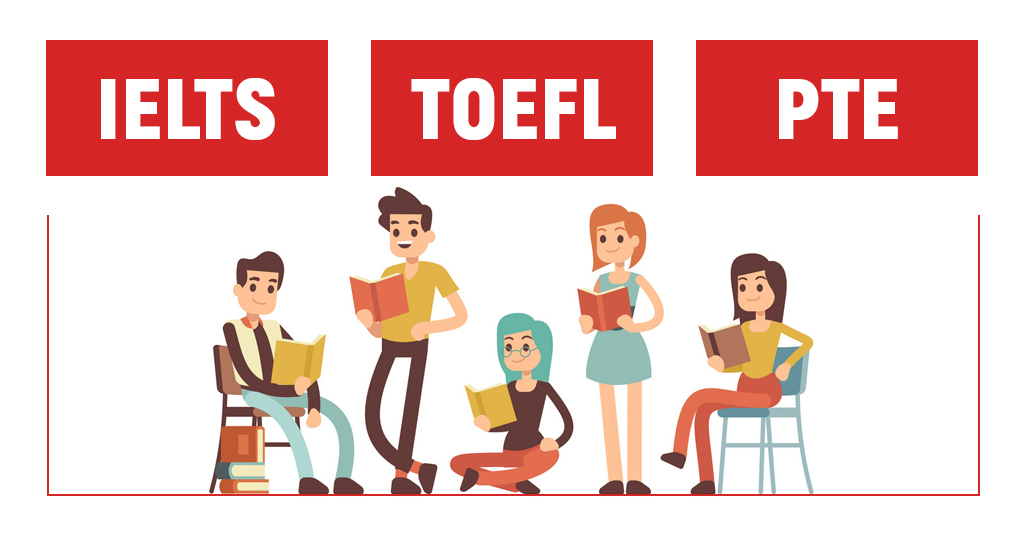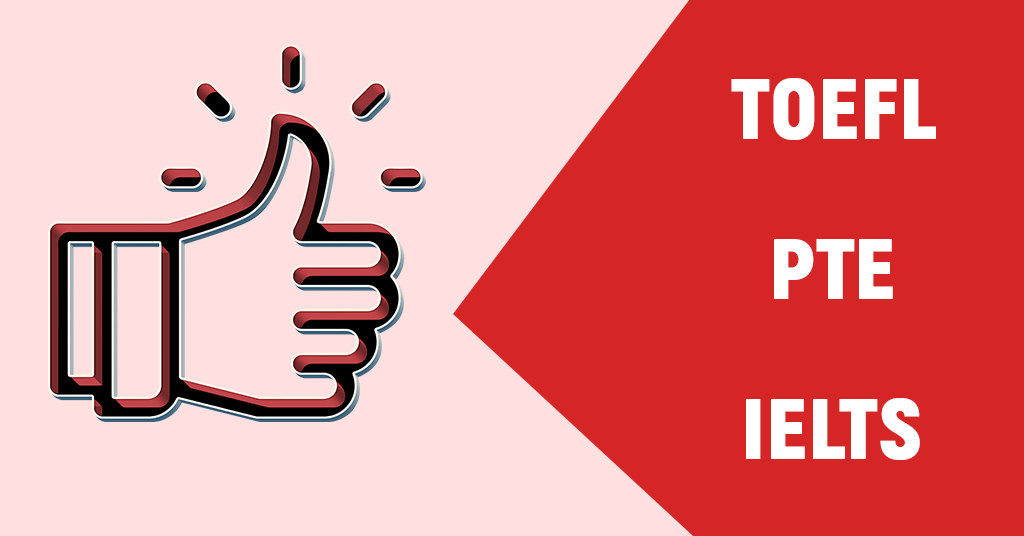
Wanna study abroad?
Wanna get settled in your dream country?
Every year, millions of people go abroad for higher studies, immigration, and work. However, before going to any English-speaking country, one needs to qualify the exams like IELTS, TOEFL OR PTE to survive in a foreign land. It is the test to examine your skills to read, write, speak, and listen in comparison to natives. So if you wish to live, work, or study in an English-speaking country, then first you need to qualify for one of these exams as per your country preference.
IELTS stands for International English Language Testing System. It is one of the most renowned tests all over the world. There are two categories
1) IELTS Academics which is basically for the students who wish to do their higher studies from abroad
2)IELTS General which is for the professionals who wish to work or want to migrate to any English country.
Both the tests consist of 4 modules
Reading Writing Listening Speaking.
Its results will be evaluated on a scale of 1-9. This consists more of British and Australian English.
The first three tests will be held on the same date and speaking will be taken on some other date.
This test is popularly recognized in some of the top universities in many countries such as Australia, New Zealand, Canada, the UK, and the US.
TOEFL stands for Test of English as a Foreign Language.
It is one of the oldest tests which is also accepted by top-notch universities in different countries from the US, the UK to Australia, and Canada.
This MCQ-based exam consists more of US English. So if you wish to go to America, opt for this. it will help you to develop overall skills along with an American accent.
Moreover, It is the longest test of the three which lasts up to 4 hours. The level of proficiency ranges from 0-120.
PTE is the Pearson Test of English.
It is a computer-based test to examine your ability in all 4 modules
Reading Writing Listening Speaking It will be done online without any human interaction and the results will be out within 5 business days.
Here the level of proficiency will be evaluated between 10-90. This particular test is relatively new but popular and originated in Australia.

The below table gives a comparative overview of the three tests:
| IELTS vs TOEFL vs PTE: An Overview | |||
| IELTS Academic | TOEFL iBT | PTE Academic | |
| Organization | British Council/IDP | Educational Testing Service (ETS) | Pearson |
| Official Website | IDP India | https://www.ets.org/toefl | https://pearsonpte.com/ |
| Format | Paper-based or Computer Delivered; Face-to-face for Speaking test | Internet-based | Computer-based |
| Duration | 161-164 mins | 200-250 mins | 154-191 mins |
| Fee | INR 13250 | USD 180 | INR 13,300 |
| Sections | Listening Reading Writing Speaking | Reading Listening Speaking Writing | Speaking & Writing Reading Listening |
IELTS vs TOEFL vs PTE: Score Comparison
One of the biggest determining factors in your choice for IELTS vs TOEFL or PTE is the score you are required to get as per the admission criteria of the institution you’ve applied to. All three of these tests use a different scale for measuring the scores. While IELTS uses a 9-band scale for scores in each of its sections as well as overall, TOEFL iBT has 30 marks for each of its 4 sections and an overall score out of 120. PTE uses a granular scale of 10 to 90 to give overall scores, as well as individual scores for Communicative Skills and Enabling Skills.
The below table gives a comparison between the scores on each of the tests, and how these translate to the English proficiency level of the candidate:
| IELTS vs TOEFL vs PTE: Score Comparison | |||
| IELTS Academic | TOEFL iBT | PTE Academic | Proficiency Level |
| 9 | 118-120 | 89-90 | Expert |
| 8.5 | 115-117 | 83-85 | Very Good |
| 8 | 110-114 | 78-82 | Very Good |
| 7.5 | 102-109 | 73-77 | Good |
| 7 | 94-101 | 64-72 | Good |
| 6.5 | 79-93 | 58-63 | Competent |
| 6 | 60-78 | 50-57 | Competent |
| 5.5 | 46-59 | 42-49 | Modest |
| 5 | 35-45 | 35-41 | Modest |
| 4.5 | 32-34 | 30-34 | Limited |
| 0-4 | 0-31 | 0-30 | Extremely Limited |
IELTS vs TOEFL vs PTE: Sections of the Test
Each of the three tests – whether it is IELTS or TOEFL or PTE – are designed to evaluate a candidate’s English language skills across the spectrum. This is why the sections in all three tests are similarly designed, focusing on the four major components of the English language: speaking, listening, reading, and writing. There are only a few minor differences in how the sections are divided – in IELTS, unlike the other two, the Speaking test is conducted in-person, for instance. Additionally, the PTE combines the sections of Speaking and Writing into one.
There are many differences in the content of the individual sections as well. Here, we shall discuss in detail how the three tests evaluate the candidate’s skills in reading, listening, speaking, and writing.
IELTS vs TOEFL vs PTE: Reading
The reading sections are much longer in IELTS Academic and TOEFL iBT, with the passages being much longer as well. The IELTS Reading section lasts 60 minutes, while the TOEFL iBT reading section lasts 60 to 80 minutes. The Reading section in PTE Academic is shorter, with a duration of 32-41 minutes. Another major point of difference between the PTE and the other two is the fact that it is an integrated skills test. This means that the Reading test also tests a candidate on their writing skills in one of the tasks. For IELTS and TOEFL, test-takers need to answer only objective-type questions.
Please refer to the below table for major differences in the reading section for IELTS vs TOEFL vs PTE:
| IELTS vs TOEFL vs PTE: Reading Section | |||
| IELTS Academic | TOEFL iBT | PTE Academic | |
| Duration | 60 mins | 60-80 mins | 32-41 mins |
| No. of Questions | 40 | 36-56 | 15-20 |
| No. of Passages | 3 | 3-4 | 5 |
IELTS vs TOEFL vs PTE: Listening
For the Listening section, candidates are required to hear voice recordings in each of the three tests, and then answer questions accordingly. The listening test is much shorter in case of the IELTS, at 30 minutes, while it takes longer for both TOEFL iBT and PTE Academic. Also, in TOEFL iBT, test takers may be required to take notes while listening since they only get to see the questions after the recording. Again, the PTE being an integrated skills test, poses questions that test the candidates’ writing skills along with their listening skills.
Please refer to the below table for the differences between the listening sections of the three tests:
| IELTS vs TOEFL vs PTE: Listening Section | |||
| IELTS Academic | TOEFL iBT | PTE Academic | |
| Duration | 30 mins | 60-90 mins | 45-57 mins |
| No. of Questions | 40 | 34-51 | 18-25 |
| No. of Recordings | 4 | 6-9 | 8 |
IELTS vs TOEFL vs PTE: Speaking
There are many differences in the speaking section of the three tests. The most important of them is the format. For IELTS, the speaking test is conducted separately, in a face-to-face session with the examiner. In case of TOEFL iBT and PTE Academic, test takers record their responses into a microphone. The section is also longer in the case of the PTE since it combines the Speaking test with the Writing test as a single section. Additionally, candidates taking the PTE may also be required to combine their reading and listening skills for the Speaking test.
Please refer to the table below for the differences in the speaking sections for IELTS vs TOEFL vs PTE:
| IELTS vs TOEFL vs PTE: Speaking Section | |||
| IELTS Academic | TOEFL iBT | PTE Academic | |
| Duration | 11-14 mins | 20 mins | 40-50 mins |
| Format | Face-to-face | On a computer | On a computer |
| No. of Tasks | 3 | 6 | 5 (Up to 40 questions) |
IELTS vs TOEFL vs PTE: Writing
The IELTS Writing test is often considered to be much tougher than the TOEFL or PTE. All three of the tests have two tasks each. It is also the only writing test of the three which judges a candidate solely on their writing skills, while the other two also require the speaker to combine their writing skills with their reading or listening skills. In IELTS, the first task requires a candidate to describe or summarize the information in a graph, chart, or diagram, while the second task requires them to provide their arguments in an essay format for a given topic. In TOEFL, the first task requires the candidate to write a summary based on a passage to be read, as well as a recording by a speaker. In PTE, the first task is similar and requires a one-sentence summary of a given passage. For both TOEFL and PTE, the second task is an essay on a given topic.
Refer the table below for the key differences in the writing section of the three tests:
| IELTS vs TOEFL vs PTE: Writing Section | |||
| IELTS Academic | TOEFL iBT | PTE Academic | |
| Duration | 60 mins | 50 mins | 30-40 mins |
| Format | Face-to-face | On a computer | On a computer |
| No. of Tasks | 2 | 2 | 2 |
IELTS vs TOEFL vs PTE : Advantages and Disadvantages
Now that we have looked at the key differences between the three tests, it is time to see the pros and cons of each test. As we discussed earlier, each test has its own advantages and disadvantages, and you should decide on which one to choose between IELTS vs TOEFL vs PTE based on your comfort level and end objectives. That stated, here are the advantages and disadvantages of the three tests:
Advantages of IELTS
- IELTS is preferred by those who have been learning Queen’s English or English as used in the UK, Australia, and New Zealand. Hence, Indian students may prefer the test over the other two.
- IELTS is also much more widely accepted in the UK, Australia, and New Zealand, and is often preferred when one of these countries is the destination of choice.
- IELTS also has a separate exam for General candidates and hence, is preferred over the TOEFL for those who need it for immigration or work purposes.
- Many people prefer the formal interview setting of the Speaking test in IELTS since it prepares them better for real-world situations.
- IELTS computer-delivered tests are offered most frequently, conducted almost once every day at major centers in India, and hence, is preferable for those with less time on hand.
- For those who prefer writing on paper, IELTS is the only option in India.
Disadvantages of IELTS
- Many students find the prospect of face-to-face speaking tests daunting and prefer speaking into a microphone.
- Since the speaking test is conducted on a separate date, candidates need to free themselves for two days to take the test.
- The Writing test for IELTS is considered fairly tough to score on compared to the other tests and can be a stumbling block for students who struggle with the essay structure.
- The scores for IELTS are not as detailed as the other two, and hence, test takers may require significant improvement to increase their score by even a single band.
Advantages of TOEFL
- The questions are fairly straightforward in TOEFL and it has been found to be easier to get higher scores in.
- The scoring for the Speaking test is a lot more objective with multiple evaluators comparing notes to ensure a fair score.
- TOEFL is more readily accepted in the US and Canada.
- TOEFL is very accessible with 4500 test centers around the world.
- TOEFL is slightly less expensive than the other two tests.
Disadvantages of TOEFL
- TOEFL does not have a separate test for General, and hence, is tougher for those taking it for immigration purposes.
- Test takers might need to be fast to register since test dates for TOEFL fill up fast, and there are late registration fees for registering on a short deadline.
- It is the longest exam among the three, taking almost 4 hours or more.
- Since it is exclusively computer-based, it can be hard for those lacking basic computer skills.
Advantages of PTE
- PTE results can be received the fastest – within a couple of days to up to a week.
- The writing test in PTE is much easier since you are only required to write one long-form response.
- PTE can be finished within a single day and is, therefore, the shortest of the three tests in terms of time required.
- There is no physical examiner present through most of the tests which are completely automated.
Disadvantages of PTE
- PTE, being quite new compared to the other two, is still not accepted at many major universities.
- Since the Speaking test is evaluated through a computer, there are chances of getting a low score because of a heavy accent.
- The recordings for PTE Listening can be tough to decipher since they use real lectures in English.

